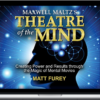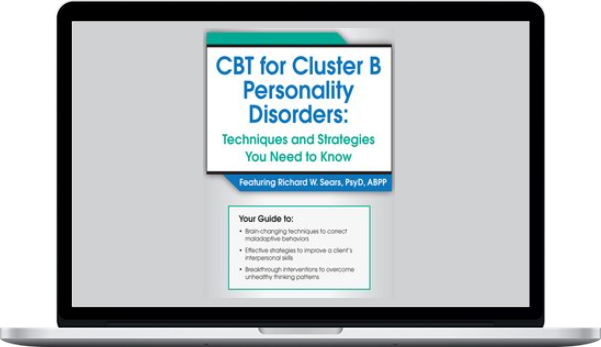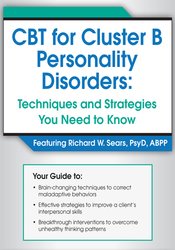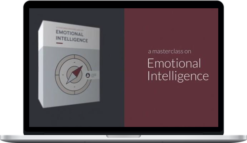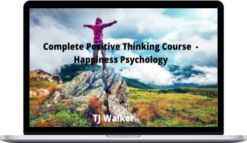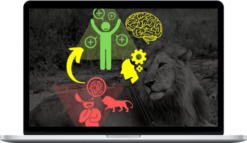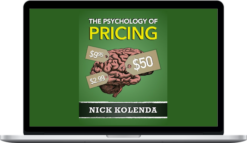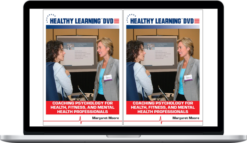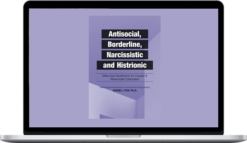Richard Sears – CBT for Cluster B Personality Disorders, Techniques and Strategies You Need to Know
$109.99 $67.00
»Within 7 days
Description
Richard Sears – CBT for Cluster B Personality Disorders, Techniques and Strategies You Need to Know
Description of CBT for Cluster B Personality Disorders
Clients with cluster B personality disorders (borderline, antisocial, histrionic, and narcissistic) can be amongst the most challenging for therapists. Clinicians who are not properly trained can inadvertently make clients worse, and can even put themselves at risk for licensure board complaints.
However, when equipped with a deeper understanding of these disorders and the most effective principles and techniques, it can be extremely rewarding to witness the positive ripple effects that occur in these clients and their families.
In this recording, join clinical psychologist and author Dr. Richard Sears for a compassionate yet direct approach for working with these individuals using cutting edge, practical interventions that are grounded in theory.
What you’ll learn in CBT for Cluster B Personality Disorders, Techniques and Strategies You Need to Know
You’ll learn:
- How even the most frustrating, maladaptive behaviors get conditioned and reinforced over time (and what to do about it)
- How recognize and interrupt unhealthy thinking patterns
- Strategies for breaking free of struggles with thoughts, feelings, and unhealthy behaviors
- Skills for managing stress, pointers for managing stressful sessions, etc.
- How to avoid getting “sucked in” or hooked into the drama, “crisis of the week”
- How to model presence with distress and emotional chaos
With solid principles and detailed case examples, Dr. Sears will bring these concepts and methods to life with passion and humor, giving you practical take-aways to use in your very next therapy session!
Objective
- Differentiate diagnostically between the four Cluster B personality disorders to accurately inform the treatment planning process.
- Utilize treatment interventions based in cognitive and behavioral approaches, including exposure, chain analysis. ABC records and challenging distortions, for clients diagnosed with personality disorders.
- Recognize and address potential clinical issues including crisis management, countertransference, boundary setting and self-care.
- Implement mindfulness-based interventions to increase clients’ psychological flexibility and decrease emotional intensity.
Outline
What You Need to Know about Cluster B Diagnoses and Approaches
- Diagnostic criteria: borderline, antisocial, histrionic, narcissistic personality disorders
- Key features of each disorder – differential diagnosis considerations
- Top indicators of PD you won’t find in the DSM-5®
- 5 things you probably never knew about cluster B personality disorders
- How to avoid judgment and labeling and its importance
CBT Treatment Strategies and Techniques for Cluster B – Your Guide to Practical Application
Behavior – How to Approach Maladaptive Behavior, Self-Sabotage, Manipulation and Attention Seeking
- How to shift behaviors that have been conditioned over a lifetime
- Disrupting reinforcement
- 5 things you may be doing that actually reinforces maladaptive behavior
- Practical application of classical and operant conditioning concepts
- Roots of behavioral therapy
- Psychoeducation: Increase clients’ insight into how their behavior is reinforced
- Exposure techniques: Build distress tolerance and momentum toward healthier choices
- Chain analysis: How to address a client’s feelings of hopelessness, improve awareness and identify precipitating factors and choice points
- Case study – Sam, The Man Who Blames Everyone Else
Cognitive – How to Recognize and Interrupt Unhealthy Thinking Patterns
- How to address negative beliefs about treatment, the experience of negative emotion and getting better
- How to adapt cognitive techniques specifically for Cluster B
- ABC records and Challenging Beliefs Worksheets
- Socratic dialogue
- Common cognitive distortions
- Why challenging your client’s thoughts can make things worse
- Case study – Martha, The Woman Who Confused her Thoughts and Memories with Reality
Mindfulness and Acceptance – Break Free of Distressing Thoughts, Feelings and Behaviors
- How to increase psychological flexibility, decrease emotional intensity, and focus on the bigger picture
- Why mindfulness and relaxation are not the same thing
- Mistakes with mindfulness – inadvertently encouraging avoidance
- How to adapt mindfulness and acceptance techniques for Cluster B
- Cognitive defusion: Stepping back from thoughts
- Acceptance: Letting go of control
- Mindfulness: Foster the ability to stay present
- Observing the self: Develop a bigger sense of who you are
- Identify values: Finding the “why”
- Take committed action
- Case study – Arthur, the Loving, Self-Centered Father
Special Clinical Considerations for Personality Disorder Practitioners
- Crisis management: Suicidal ideation/gestures, self-injury
- Create a clear crisis management plan to keep clients safe and avoid personal liability
- What you need to avoid – documentation considerations and more
- 5 signs you need to check your boundaries
- Preventative measures – to avoid boundary violations and false reporting to licensure board
- Strategies for recognizing and addressing countertransference – being honest without getting lost
- Top 3 tips for staying present in session
- Balance boundaries with compassion
- Model presence with distress, not joining the emotional chaos
- Internal messages – Not getting sucked in
- Exercise: People that bother me
About Richard Sears, PsyD, PhD, MBA, ABPP

Richard W. Sears, PsyD, Ph.D., MBA, ABPP, has given hundreds of workshops on ACT all around the world. He is a board-certified clinical psychologist in Cincinnati, Ohio, where he runs a private therapy and consultation practice, and is Director of the Center for Clinical Mindfulness & Meditation. He holds several academic appointments, including the Department of Clinical Psychiatry & Behavioral Neurosciences with the UC College of Medicine. Dr. Sears is also a psychologist contractor with the Cincinnati VA Medical Center and with Alliance Integrative Medicine.
Dr. Sears is author of over a dozen books, including ACT with Anxiety; The CBT & Mindfulness Toolbox and Mindfulness: Living Through Challenges and Enriching Your Life. He is also a sixth-degree black belt in Ninjutsu, and once served as a personal protection agent for the Dalai Lama of Tibet. He has a PhD in Buddhist Studies, and received ordination in three traditions, as well as recognition as a Zen master.
Speaker Disclosures:
Financial: Dr. Richard Sears maintains a private practice and has employment relationships with the University of Cincinnati and Wright State University. He receives compensation as a consultant. Dr. Sears receives royalties as a published author. He receives a speaking honorarium, recording, and book royalties from PESI, Inc. He has no relevant financial relationships with ineligible organizations.
Non-financial: Dr. Richard Sears is the founder and director for Center for Clinical Mindfulness and Meditation and is a member of the American Board of Professional, the Academy of the American Board of Clinical Psychology, and the Association for Contextual Behavioral Sciences. He is a peer reviewer for Mindfulness and a book reviewer for John Wiley & Sons, Inc, and Routledge.
More courses from the same author: Richard Sears
Delivery Policy
When will I receive my course?
You will receive a link to download your course immediately or within 1 to 21 days. It depends on the product you buy, so please read the short description of the product carefully before making a purchase.
How is my course delivered?
We share courses through Google Drive, so once your order is complete, you'll receive an invitation to view the course in your email.
To avoid any delay in delivery, please provide a Google mail and enter your email address correctly in the Checkout Page.
In case you submit a wrong email address, please contact us to resend the course to the correct email.
How do I check status of my order?
Please log in to HealingCourse account then go to Order Page. You will find all your orders includes number, date, status and total price.
If the status is Processing: Your course is being uploaded. Please be patient and wait for us to complete your order. If your order has multiple courses and one of them has not been updated with the download link, the status of the order is also Processing.
If the status is Completed: Your course is ready for immediate download. Click "VIEW" to view details and download the course.
Where can I find my course?
Once your order is complete, a link to download the course will automatically be sent to your email.
You can also get the download link by logging into your HealingCourse account then going to Downloads Page.
Related products
Total sold: 4
Total sold: 2
Total sold: 3

